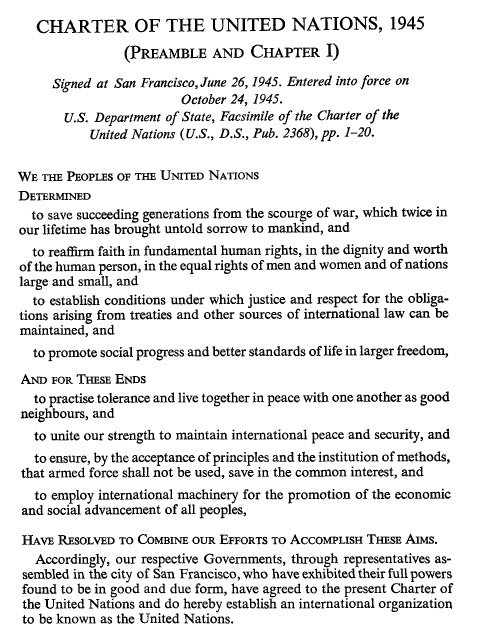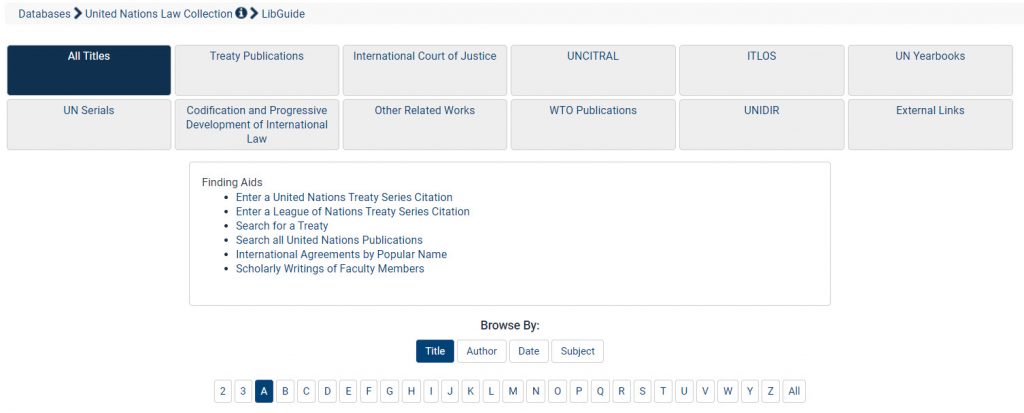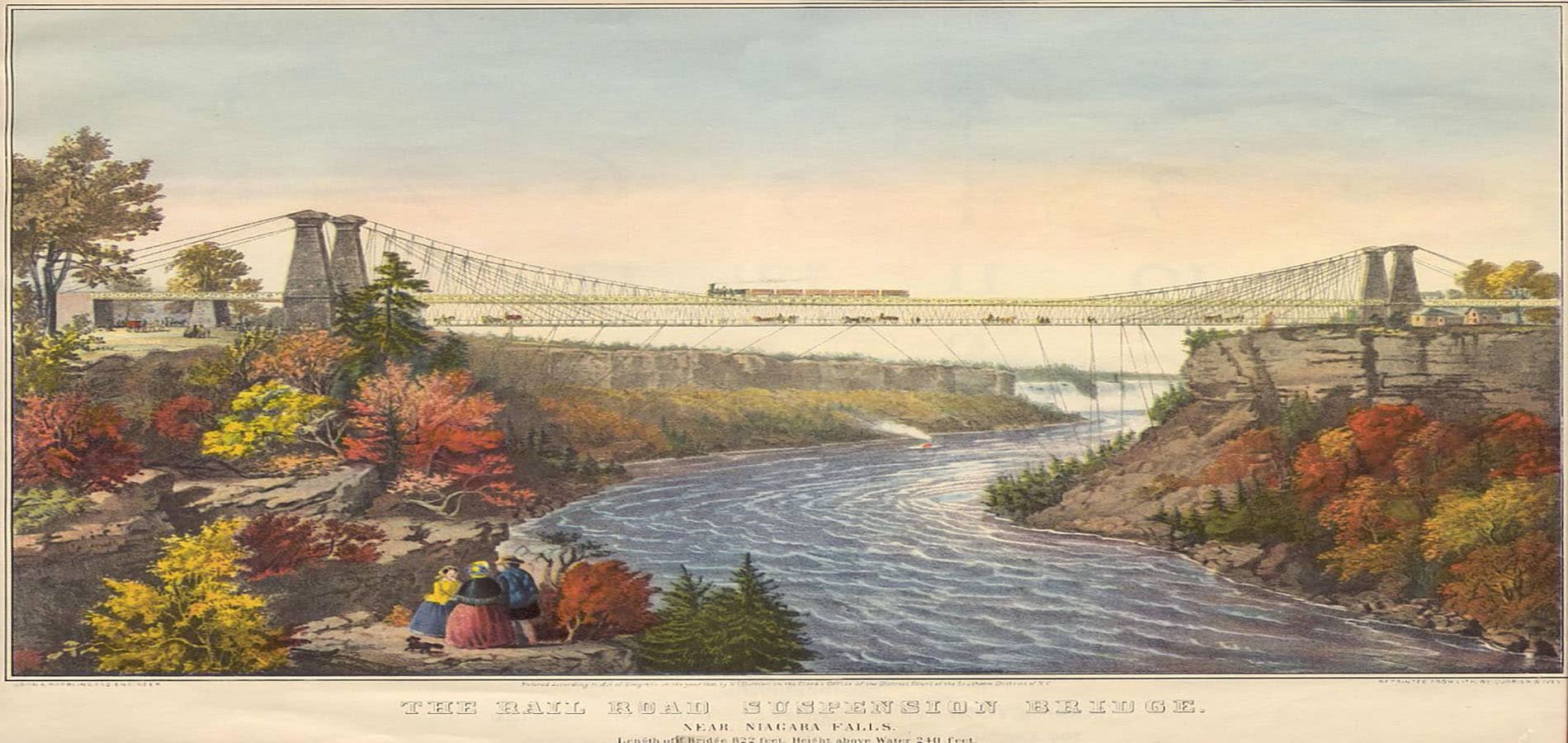The United Nations was born out of the most devastating conflict in world history—World War II. Learn about the history and development of the international organization while exploring HeinOnline’s United Nations Law Collection.
About the United Nations Law Collection
This database offers researchers a complete online international law database featuring exact reproductions of major United Nations legal publications.
Finding aids and additional features make it easy to access UN treaties by performing standard searches, entering UNTS citations, or by linking to treaties cited in law review articles.
A History of the United Nations
The League of Nations
The 1914 assassination of Austro-Hungarian heir Archduke Franz Ferdinand sparked a domino effect that resulted in the First World War. By 1918, calls for an international organization to preserve peace resounded—a cause ardently supported by American President Woodrow Wilson. On January 8, Wilson presented a fourteen-point plan before a joint meeting of Congress that outlined an end to the war and offered a sketch of such an international body.
In the summer of the following year, Wilson proposed the Treaty of Versailles—including The Covenant of the League of Nations—before the U.S. Senate. After ratification by more than 40 nations (but not the United States), the Covenant took effect on January 10, 1920, establishing the League of Nations as an organization.

Over the next two decades, however, the League showed itself to be ineffective as a peacekeeping organization. In 1933, the Empire of Japan invaded Chinese Manchuria—a choice near-universally condemned within the League. After 42 nations voted for Japan to withdraw its forces, the empire responded by leaving the organization.
Similarly, the League failed to prevent the Second Italo-Ethiopian War. In 1935, Italian leader Benito Mussolini invaded Ethiopia, despite the League’s requests, establishing Italian East Africa by 1937. Following Italy’s victory, the organization attempted to impose economic sanctions on the country; in response, Mussolini left the League of Nations.
Forming a New Organization
When a second World War broke out in 1939, European League members were quickly conquered by Hitler. Switzerland shut down the League’s headquarters in Geneva, concerned that hosting the peacekeeping organization would be considered siding with the Allied powers.
In 1941, the United States and Britain issued the Atlantic Charter, a formal plan for a post–World War II world. Those adhering to the Charter also signed a Declaration by United Nations, a term coined by President Franklin D. Roosevelt to describe the Allies. Between 1942 and 1945, forty-seven nations signed the declaration.
In 1944, the United States, United Kingdom, Soviet Union, and China met at the Dumbarton Oaks Conference to discuss the creation of a new, more effective international peacekeeping organization. In 1945, fifty governments and multiple non-governmental organizations drafted a Charter of the United Nations at the United Nations Conference on International Organization in San Francisco, CA. The Charter detailed the structure of the new organization while also outlining its purpose and principles. The first meeting of the United Nations took place on January 10, 1946, twenty-six years after that of the League of Nations.

The United Nations During the Cold War
Though the initial purpose of the United Nations was to maintain peace, this became difficult during the Cold War era. American and Soviet hostilities permeated their spheres of influence, forcing the UN to intervene only in unrelated and distant conflicts. During this time, the organization still achieved notable milestones, including:
- 1947: The approval of a resolution that would partition Palestine to create the state of Israel.
- 1956: The establishment of the first United Nations Emergency Force for the purpose of ending the Suez Crisis.
- 1960: The creation of the UN’s largest military force of the time, the United Nations Operation in the Congo (UNOC).
- 1964: The deployment of the UN Peacekeeping Force in Cyprus (UNFICYP), one of the organization’s longest-lasting missions.
Throughout the 1960s, many new nations were formed with the spread of decolonization, most of which joined the organization. With so many Third World members, the United Nations directed more of its focus toward economic development.
Post-Cold War Development
By the 1980s, the Cold War was coming to an end and the UN was able to expand its peacekeeping efforts. Among its accomplishments, the organization deployed a successful peacekeeping force in Namibia (1989), authorized the U.S. to force Iraq out of Kuwait in the Gulf War (1991), and brokered an end to the Salvadoran Civil War (1992).
In 2000, world leaders met at the Millennium Summit to discuss the role of the United Nations in the 21st century. As a result of the meeting, all UN member states adopted the United Nations Millennium Declaration and its resulting Millennium Development Goals (MDGs)–eight commitments to address issues like poverty, gender equality, environmental sustainability, and more by 2015. The 2015 deadline saw uneven progress, however—some countries achieved many of the goals by the deadline, while others did not.
To succeed the Millennium Development Goals, the General Assembly then presented the Sustainable Development Goals (SDGs)—seventeen more pledges to eradicate poverty, end hunger, achieve gender equality, and more by 2030. Check out the progress made so far.
HeinOnline’s United Nations Law Collection
For exact reproductions of major United Nations legal publications, check out HeinOnline’s United Nations Law Collection. Along with a vast collection of treaties, the database includes the following unique sections:
International Court of Justice
The publications of the International Court of Justice, published by the Registry in several series. These include (1) Judgments, Advisory Opinions and Orders; (2) Pleadings, Oral Arguments, Documents; and (3) Yearbooks. Includes the International Court of Justice Reports of Judgments, Advisory Opinions and Orders.
United Nations Commission on International Trade Law (UNCITRAL)
Publications from the core legal body of the UN system in the field of international trade law. UNCITRAL’s mission is the modernization and harmonization of rules on international business.
International Tribunal for the Law of the Sea (ITLOS)
Publications from an independent judicial body established by the UN Convention on the Law of the Sea to adjudicate disputes arising out of the interpretation and application of the Convention. The Tribunal is composed of 21 independent members, elected from among persons enjoying the highest reputation for fairness and integrity and of recognized competence in the field of the law of the sea.
United Nations Yearbooks
The principal reference works of the United Nations, providing a detailed overview of the organization’s activities. Titles include the popular ICJ Yearbook and UN Disarmament Yearbook.
United Nations Serials
A collection of unique serial publications focused on the activities of the United Nations. More than 35 serials are available, including:
- Statement of Treaties and International Agreements, 1983-current
- Report of the Security Council, 1946-current
- Report of the Economic and Social Council, 1946-current
- United Nations Chronicle, 1964-current
- Resolutions and Decisions Adopted by the General Assembly, 1946-current
Codification and Progressive Development of International Law
Publications focusing on the more precise formulation and systemization of rules of international law, as well as the preparation of conventions on subjects that have not yet been regulated by international law.
World Trade Organization Publication
Documents pertaining to the World Trade Organization, an intergovernmental body with strong ties to the United Nations whose purpose is to address the regulation of international trade.
United Nations Institute for Disarmament Research (UNIDIR)
Publications from UNIDIR, an action-oriented research program bringing together perspectives on national, regional, and international security, disarmament and development with a fundamental focus on human security.

Looking for something specific? Learn how to use the unique search tools in this database with our United Nations Law Collection LibGuide.
For great information on historical topics and current events, subscribe to the HeinOnline Blog today. Don’t forget to connect with us on Twitter, Facebook, Instagram, and LinkedIn.



